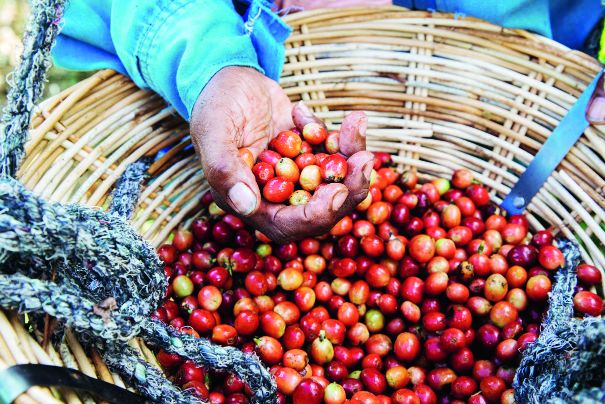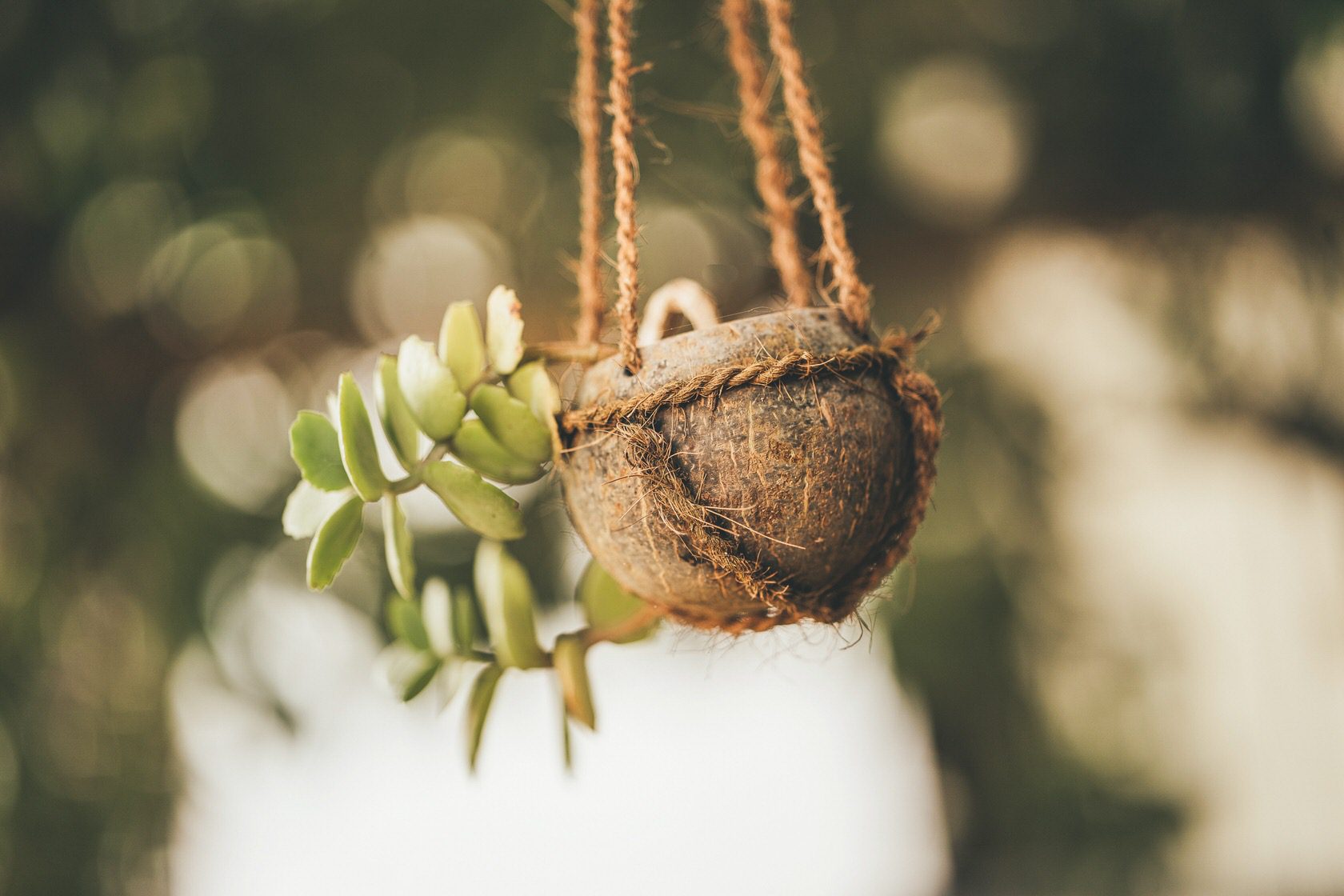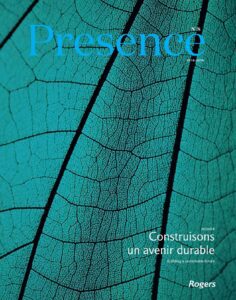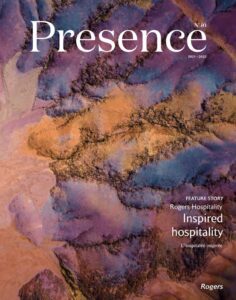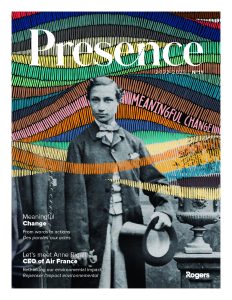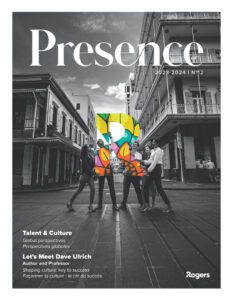One thing that is for sure about Café de Chamarel is its special relationship with the forces of nature. Land, water, air and sun all form part of the coffee chain, as well as the fifth element, man himself.
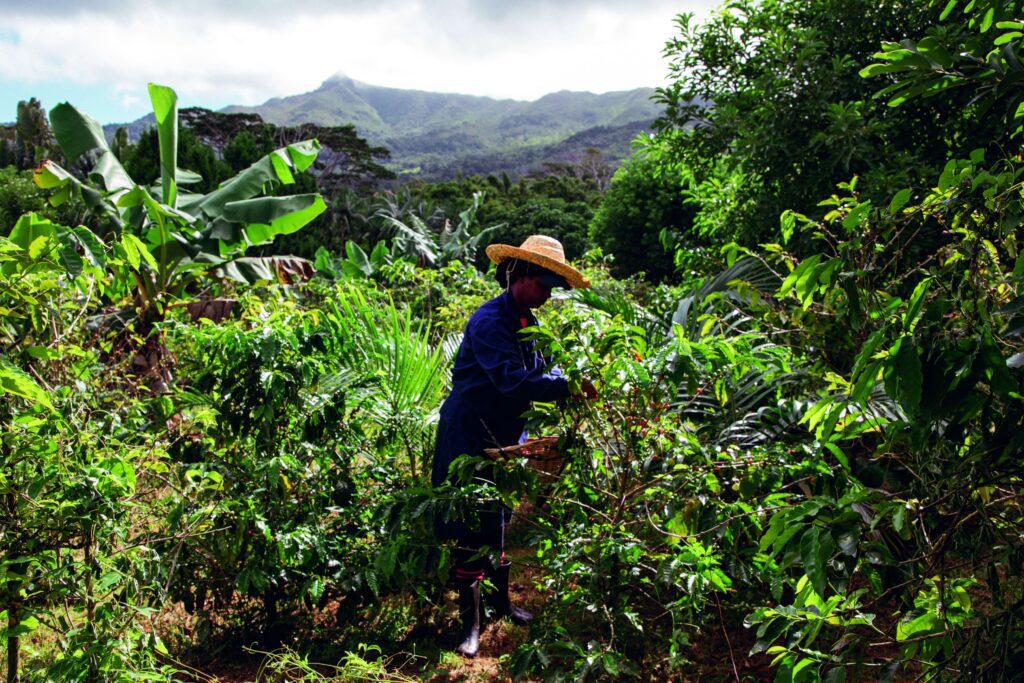
Chamarel: Land and Water
In September, the coffee fields bask in a pretty quiet atmosphere during the plant maintenance season. You must leave the main road and venture on dirt tracks to access the coffee plantations, protected by the abundant nature of Chamarel and towered over by Piton Canot. A dozen men and women pass through the 16 hectares of coffee plantations to get rid of the weeds around the plants and especially to prune by hand already flowering branch stubs in order to allow new shoots to flower and produce cherries.*
Harvest time is much more lively, says Mario Coiffic, who has been working with Compagnie Sucrière de Bel Ombre (now Agrïa) for more than 40 years. “There are about fifty people working in a very cheerful atmosphere around the coffee plants.” The harvest period lasts up to three months. The rather acid soil, altitude and rainfall in Chamarel allow the shrubs to grow and produce fruit naturally, without irrigation. The water element is used again during pulping.*
Case Noyale: Air and Sun
The Café de Chamarel factory is located amidst tamarind trees on the Case Noyale hunting grounds. In a relaxed atmosphere and seated on stools, Marie and Quincy focus on sorting the coffee beans in large trays, in the same way as for rice in olden times. After reaching there, the coffee beans first go through the curing* process, using the air element. They are then placed in the sun to dry on metal tables in the open air. Then comes the hand sorting stage.
The delicate aroma of freshly ground coffee wafts through the air of the roasting* room, where manual techniques give way to the latest technology from Germany. This is a critical stage as it only takes a few seconds of carelessness for things to go all wrong, says Julien, who is in charge of the factory operations. Every year, some 18 tonnes of coffee are produced mainly for the local market. While activities in Chamarel are seasonal, there is no downtime in Case Noyale and the small team works all year round.
The fifth element: Man
Although Man has no control over the elements, he remains responsible for the quality of Café de Chamarel. Harold oversees planting and processing operations in the highlands with seasonal workers. He is believed to have an eye on everything. Julien is supported in Case Noyale by Marie, Quincy, Susie, Cindy, Maisy and Jean-Marc. Mario is part of Agrïa’s agricultural operations team. They all provide the patience and commitment to produce the only 100% Mauritian coffee.
Cherry – A fleshy red fruit produced by the coffee plant, whose pit contains two beans. Harvesting can begin once the fruit are ripe – six to eight months after flowering for Arabica, the species used to produce Café de Chamarel. Pulping – This stage consists in removing the fleshy pulp from the fruit. Two processes are commonly used: wet and dry. The wet process is preferred for Café de Chamarel. Curing – At this stage, the parchment layer surrounding the coffee beans is removed before sorting them again to remove impurities, dust and abnormal beans. This process is also called hulling. Roasting – The coffee beans are heated to between 180°C and 240°C for a varying period of time, depending on the desired colour and taste. The longer the roasting time, the stronger the bitterness of the coffee. The coffee’s aromas and flavours are developed during the roasting process

